#mokuhanga
Text
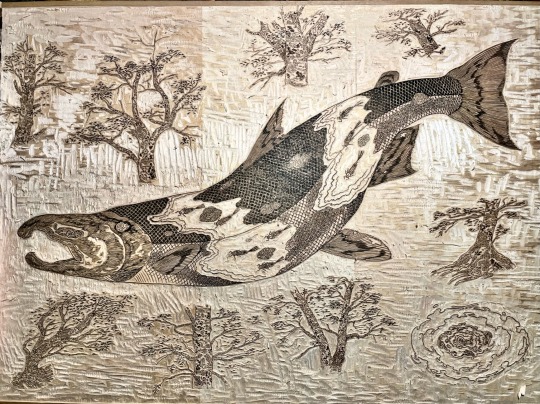
7 months of carving coming to an end, I lost some details and added some. I love and need to see the prints, but honestly, the block is the final art piece for me. It’s what I spend all my time with and each one has a segment of my life attached with it.
Shina woodblock
#nature#art#california#mendocino#sonoma#bay area#ink#printmaking#illustration#mokuhanga#ukiyoe#woodblock print#forest#木版画#picoftheday#relief print#trees#woodblock#alders#salmon#fish#coho
9K notes
·
View notes
Text

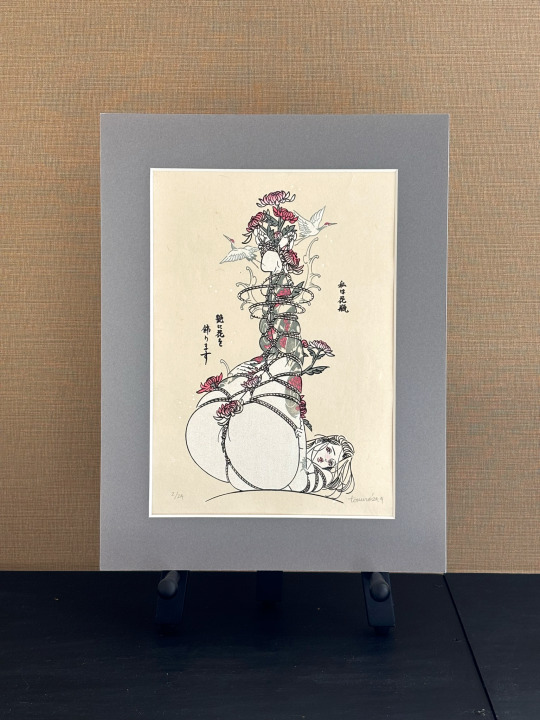


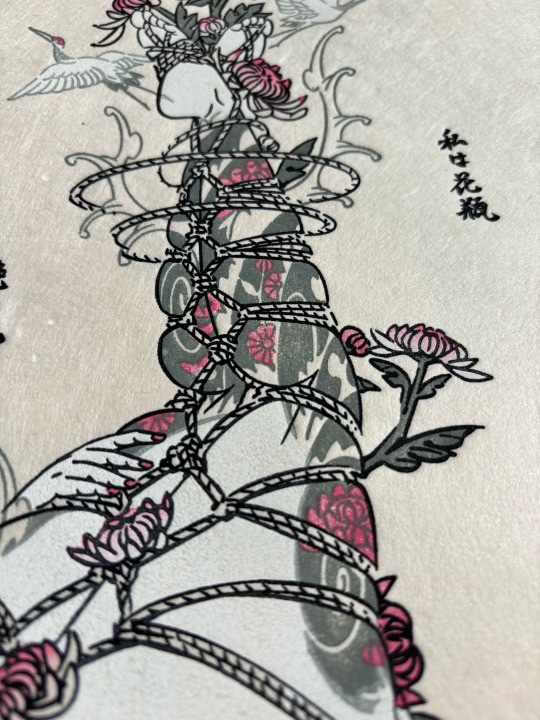
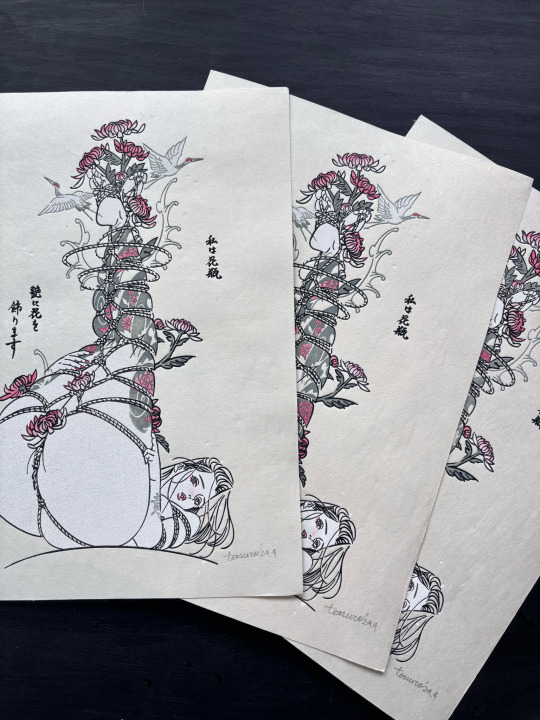
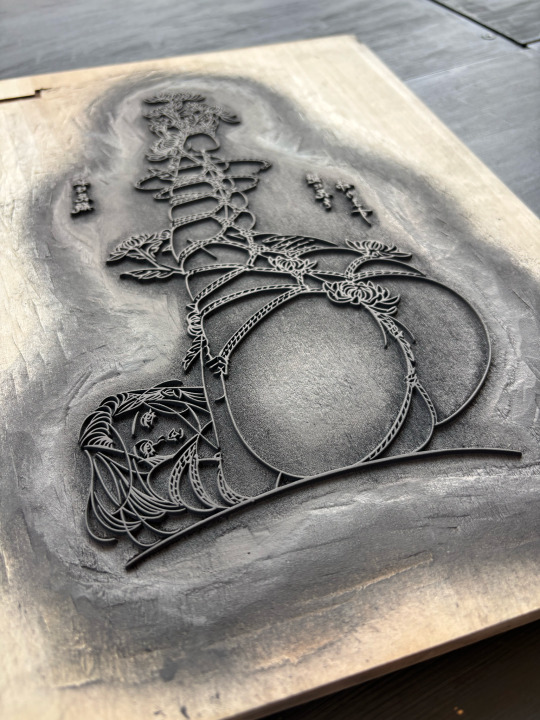
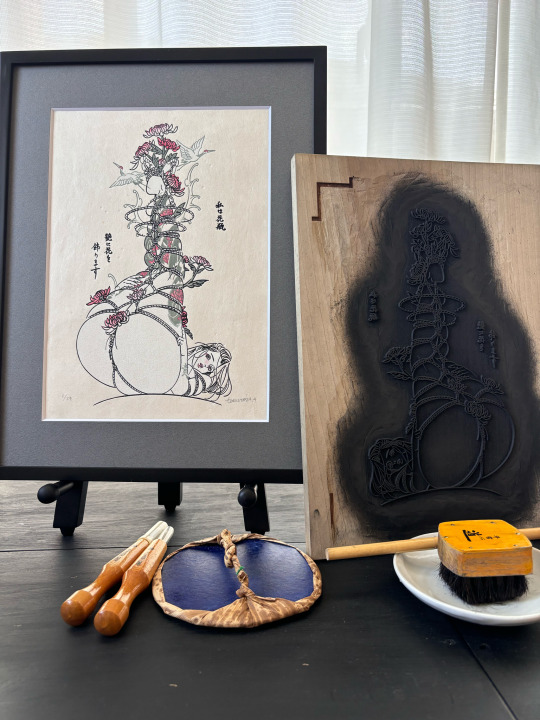

New woodblock print ‘Chrysanthemum in The Human Vase of Flower’ added to my store. Two types, with and without frames.
Now on sale.
人間花瓶の菊の木版画をストアに追加しました。フレーム有無2種を販売中です。
https://imaitetsuro.store
I made the color of the tattoo a little darker than usual to emphasize the presence of the legs stretching high into the sky.
I tried different washi this time, but in the end, my usual paper, Kumohada hemp paper, seems to suit my art.
130 notes
·
View notes
Text

Woodcut print of my oc Crookedflight
#art#my art#aesthetic#oc#original character#warriors#warrior cats#woodcut#mokuhanga#cat#Crookedflight
20 notes
·
View notes
Photo


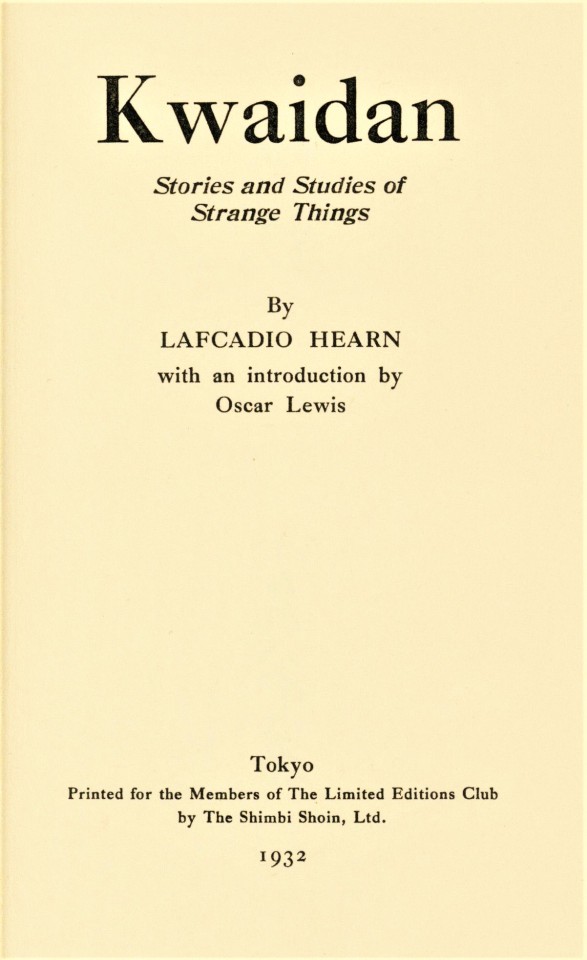


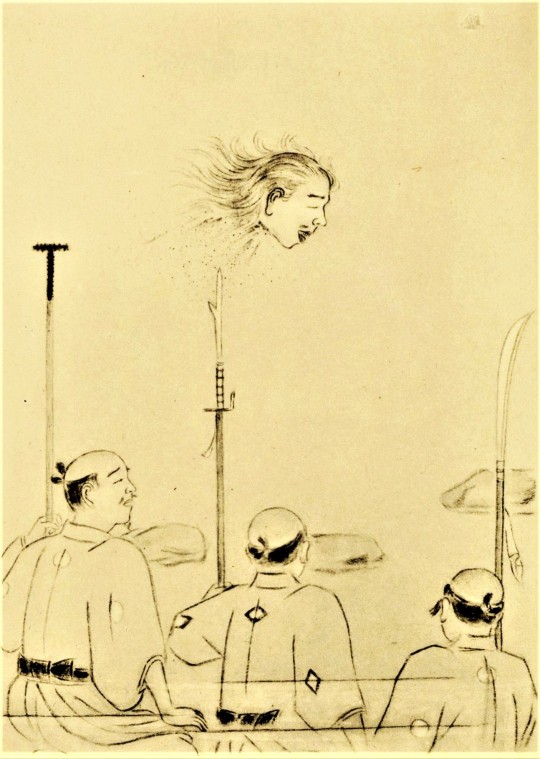


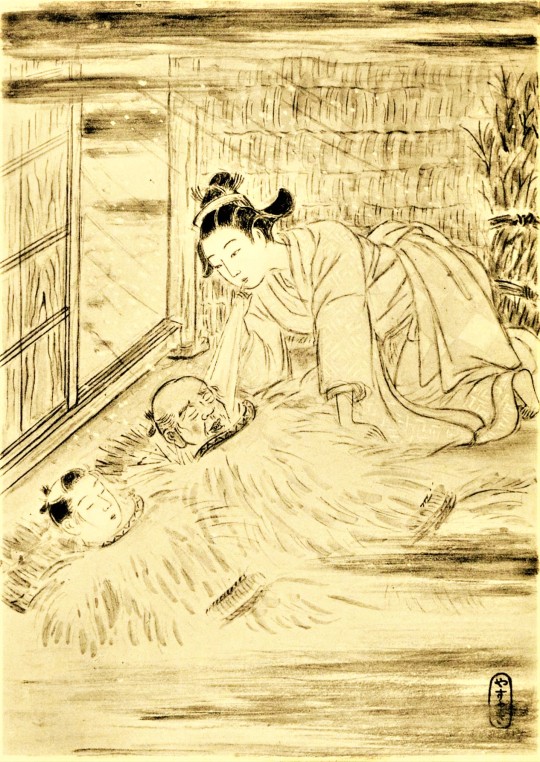

Fine Press Friday!
As promised in yesterday’s post, today we present a fine press edition of, Kwaidan: Stories and Studies of Strange Things, by Lafcadio Hearn (1850-1904), illustrated by Yasumasa Fujita, designed and printed by the Shimbi Shoin, LTD. of Tokyo, Japan for The Limited Editions Club in1932.
This edition is richly illustrated with twenty full-page illustrations by Yasumasa Fujiata. The first two illustrations are original wood-block prints, which required fifty color impressions to create the two images. The rest of the eighteen images are collotype reproductions of the artist’s originals. The decorated end sheets are also appear to be block printed in a light blue.
The text was set by hand in old-style English character and printed on hand-made Japanese paper that has been watermarked specially for this book. The book is bound with a stab binding in silk-sewed Japanese brocade and the case has been wrapped in silk. This is one of an edition of 1500 copies with a facsimile of artist’s signature and seal. .


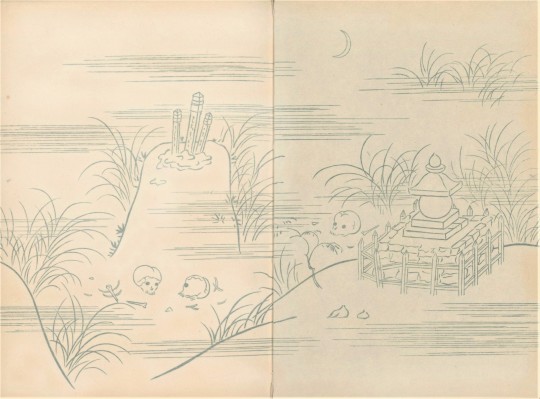
Use this link for more Limited Editions Club posts!
Use this link for more Fine Press Friday posts!
-- Teddy, Special Collections Graduate Intern.
#Fine press friday#Fine Press Fridays#Kwaidan#Lafcadio Hearn#Yasumasa Fujita#LEC#Limited Editions Club#stab binding#Japanese books#japanese illustation#Watermarks#Fine press books#Hand-made paper#Woodcuts#Wood-block prints#Mokuhanga#Teddy#Oscar Lewis#Shimbi Shoin#The Shimbi Shoin of Tokyo#Japan#Printmaking#Callotype#Old-style English Type
297 notes
·
View notes
Text
New project update! This is going to be a night time landscape. I really want to make a shinhanga type woodcut print, all smooth and detailed and it's going ok so far!
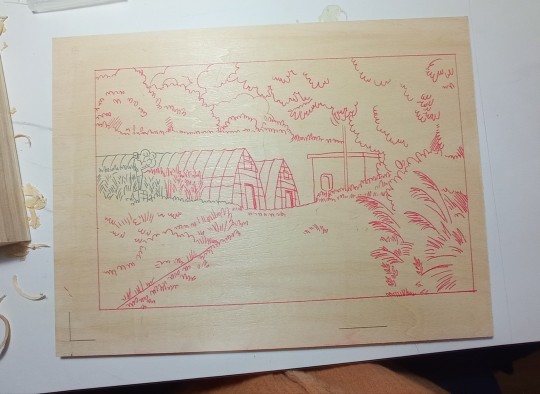

^ this is about ten or eleven hours of carving and I still have at least eight more hours to go.
My body aches.
#mokuhanga#wip#danikunst#i haven't added alt text id yet#i don't have the energy right now but I'll try to add it soon!#2#woodblock print
307 notes
·
View notes
Text

"anger" woodcut, printed using the Japanese mokuhanga technique
approx. 9"'x9"
27 notes
·
View notes
Text

Just discovered that an artist I've been watching for over a decades, David Bull of Mokuhankan fame, made a tiny senjafuda print of Pikmin. He did a whole series of 24 games, actually.


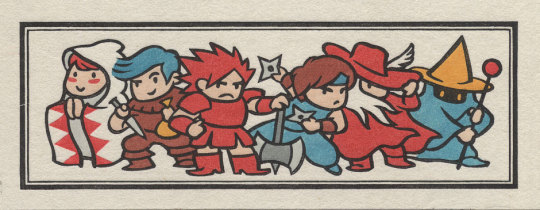
youtube
The sheer dandori of this man, my lord.
24 notes
·
View notes
Text


Trying to make sure I keep making after graduating so here’s this little two-colour eel woodcut I started today!
16 notes
·
View notes
Text

Freyja
8"×10"
Mokuhanga print
#art#illustration#artist of tumblr#artist#printmaking#printmakers on tumblr#reliefprint#woodcut print#woodblock print#woodblock printing#mokuhanga print#mokuhanga
17 notes
·
View notes
Text

Introduction about My Original Artwork of Woodblock Printing.
When I wrote my last article, what I had in mind was that I would work for income more from this year.
(What follows in this parentheses is a bit long talking that has nothing to do with the main topic of this article and this time printmaking, but let me talk.
For the past few years, I have been doing ukiyoe reproducing without considering profitability. Because, there were looked for me various contradictions fundamentally in the traditional ukiyoe reproducing. But, basically, such those issues I found seemed a kind what was difficult for people to understand. It seems difficult matter for people even to imagine, including for experts. Actually, it was difficult also for me for a long time to understand why so, why such ukiyoe reproducing done by the first class people from the very past gets fraud or contradiction easily from the early step in a project of ukiyoe reproducing. But, I now think as the reasons, that carvers' and printers' knowledge about the materials and skills nowadays includes some many that were established after the Meiji era, ukiyoe reproducing has an aspect or element as a new tradition after the Meiji era, reproducing same ukiyoe print truly as it was in the Edo era is originally out of carver's and printer's concept of skills, and researching and understanding about ukiyoe reproducing has not been developed so much that such those are recognized well. Therefore, contradictions or frauds would inevitably arise from those.
Anyway, putting aside such my opinion, but please compare and observe the prints of the original and the reproduction more than anything. And please get to recognize the differences between the original print of the first edition and the reproduction of that, in terms of the materials use as paints and paper, and the skill qualities of carving and printing as line chipped, line distortion, color misregistration, color grazed, etc. Because, that seems to be very important to understand what ukiyoe reproduction is after all.
I'd like researcher or scientist particularly who relates a ukiyoe reproducing project to clarify such those differences between the original and the reproduction by doing comparative observation, as the basic knowledge for reproducing. And also to look and verify carver's and printer's theory of ukiyoe reproducing. Why does he retouch the line finally despite he traces it from the original very carefully using a latest equipment saying himself as if he tries to reproduce the same line? Why does he have no interested in the original paints and paper of the original of the Edo era? Please look and verify their theories behind those matters. Is that really what focuses on reproducibility or results to same ukiyo-e print of the Edo era ?
I consider the fundamental cause why ukiyoe of the Edo era have not been able to reproduce truly is that organizing concepts or theories is not done properly with verifying among persons who relate a project of ukiyoe reproducing, not lacks of the materials and the skills of carver and printer nowadays. Being adopted a theory which promise from the first to be making an modern improved ukiyoe print inevitably is the most cause why not done truly, I consider.
Talking a little long, unrelated the main topic of this article. But I as 19 years old started to do woodblock printmaking. I then became a printer, having a will which I someday in the future would reproduce ukiyoe in the truest sense, but such my idea was too different from the concept or theory of the traditional ukiyoe reproducing. So, I quit a printer and worked for it individually, but that was difficult to make a living. And I in the last year decided to put a period to such my work, but, as the period, what I left to say was such like that.)
Anyway , now let turn the main topic that is the printmaking this time.
So, when I thought about income, I came to think that if for income, is it better to make a something original print with ukiyoe or shi-hanga style than reproducing? In actual, such kind of wood block prints has recently been produced frequently by various publishers. So, I this time tried to make such one.
Concerning specifically what I made, I from the past have had an idea that something nice print could be born if I make woodblock print from a vintage photo postcard as the following, which began to be frequently produced about the turn of the 20th century. So, I this time put it into action.

Concept of this time printmaking is "making a nostalgic and beautiful print". For me, one of the charms of ukiyoe and shi-hanga is nostalgia, showing the old days.
But, what is more important than that as the concept is making a beautiful print.
Although I already mentioned about income as the background of this time printmaking, it seems important for that to make a beautiful print which makes people happy to appreciate. Actually,Ididn't have such idea so much in my past reproducing work, because reproducing same ukiyoe print thoroughly seemed for me essentially different matter from making a beautiful ukiyoe reproduction.
About the Design
This time I was inspired from this postcard and made the design. I'm not sure when this postcard was made, but since the postmark is 1939, so it would have been made around that year. It shows Shinobazu Pond with lotus flowers blooming in summer, in Ueno Park.

About the Materials
As woodblocks, I used a cheap cherry one for the keyblock. And, katsura and japanese lime for the color blocks. I didn't use expensive hard cherry wood block of good quality, because even those cheap wood blocks I selected seemed to be enough for the expression this time, and also l didn't have an idea to print in a large quantity.
As paper, l used handmade washi which I bought a little long time ago and left. Not sure though, it would be mulberry with pulp. I selected it thinking it responses enough for making a beautiful print.
As paints, l used chemical ones which a traditional printer nowadays has been using generally for reproducings of ukiyoe and shin hanga.
About the Carving&Printing
I didn't pursue too much the skills like which carver and printer normally do nowadays, particularly as the following.
·Carving lines without chipping.
·Carving smooth lines.
·Printing without color misregistration.
·Printing without paint grazing.
·Printing without paint accumulation ("tamari").
·Printing without paint stain in a superfluous area on a print.
The reason why I so was just for the expression, just for the taste of the print this time. But, as a premise of that, I have an idea as the following.
Such those kinds of carver and printer skills relate to beauty just only until a certain level.
What I mean is, when we look the original prints of ukiyoe and shin hanga (not reproductions at the present), there are many beautiful prints in spite of such skill matters aren't done so well. Especially in ukiyoe of the Edo era, it's normal it has some roughness parts in its skill quality. But, that seems natural matter, thinking that it in the Edo era had been produced very speedy by several hands from master to apprentices together. And also, since the skill level of carver and printer advanced around the Meiji era, a case also happens which even it was normal or good quality from the perspective of people of the Edo era, it looks to have noticeable roughness parts from nowadays. Even it's the first impression of the first edition which was careful made in the Edo era, it seems to have roughness parts usually if we look closely.
Also in the shin hanga, it doesn't seem rare that it has some roughness parts in its carving and printing if we look closely, though those would have been basically done as intentional expression in the case of shin hanga.
So, anyway, how much are such roughness parts in carving and printing related to the beauty of the print?
I think the first edition made carefully is more beautiful than its later edition made roughly. But, it's not rare even such first edition has some roughness parts.
And, is the beauty of that print spoiled by those roughness so much? Or, would the image become more beautiful if those roughness are well fixed in reproducing? I don't think it's either.
Therefore, it seems for me that the high skills of carver and printer relate to beauty of a print just only until a certain level, and unrelated over that level.


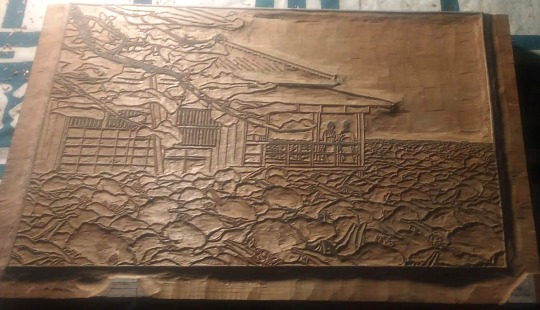
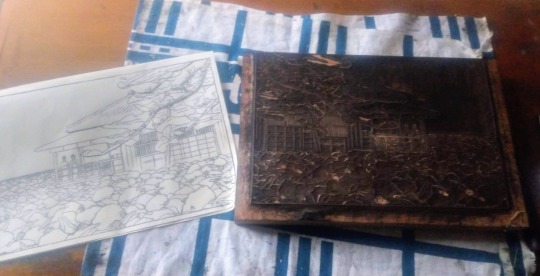

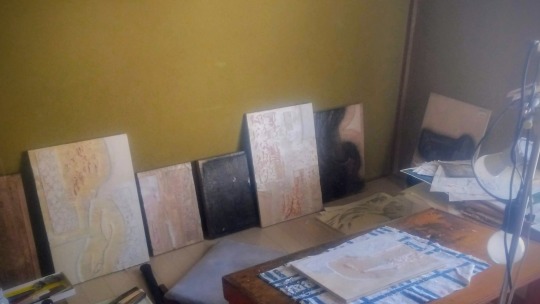
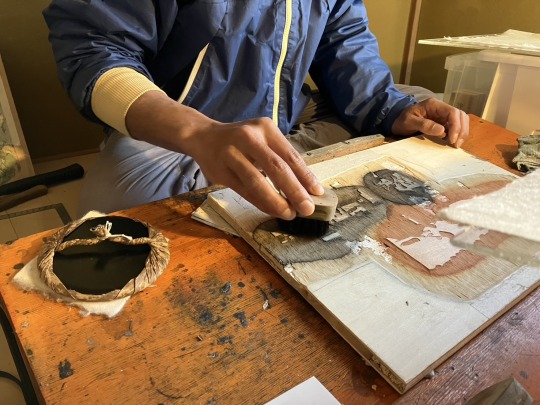
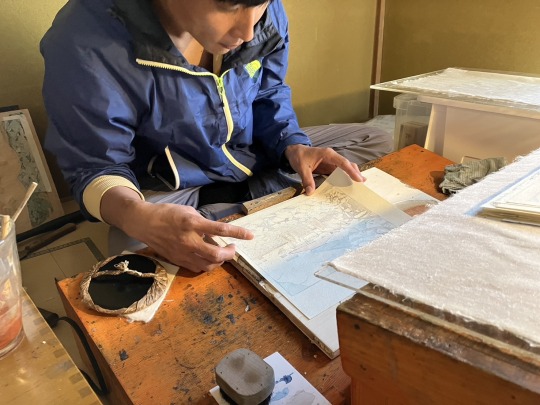


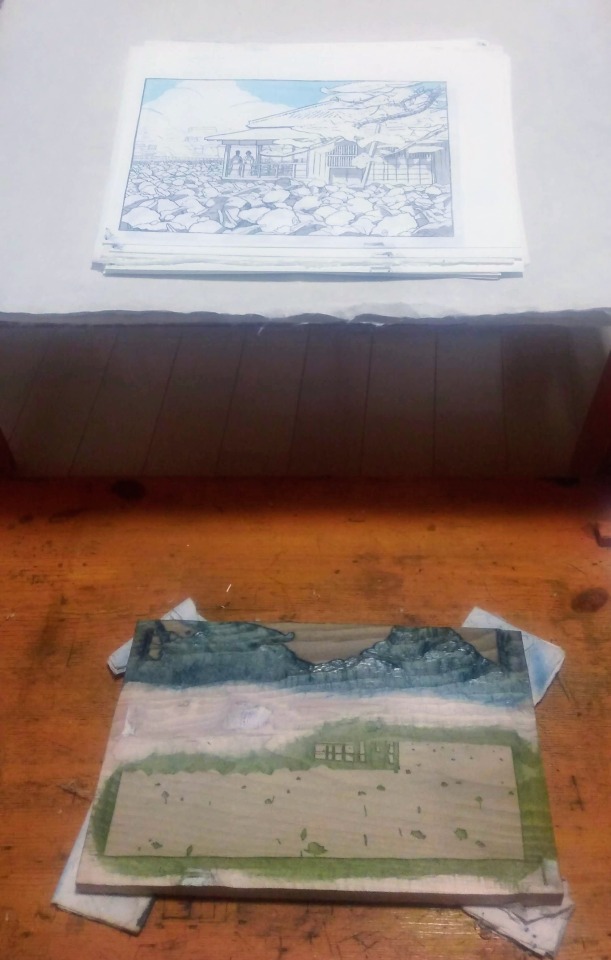


I this time printed 26 color impressions.
About Sale
Printmaking this time was so fun and comfortable. From the early step of the process, I could get something good feeling that a nice print could be born naturally, and also various nice images for the next prints came to my mind. However, whether I'll continue this project or not depends on its earnings.

Title: Ueno Park, Tokyo, 7, 1938
Paper size: 29×20.5 cm
The circulation is 23 of a limited edition. You perhaps wonder why it's such a small quantity. But, it's enough many from my sale ability at the present. I would make it more in the future new prints if people who would like to purchase my prints would appear in the future. But, in actual, if there were 20〜30 people who would like to purchase my prints around the world, that's Really enough for me.
It's available for sale in the following link.
If it would not be sold well, I will start again to make ukiyoe reproductions for vendors, as I had been doing in the past temporarily. That's not a work with publisher since I quit a printer years ago and not a carver from the first. That is a work which making in a large quantity in a cheap price while saving cost. But, that is what should be reached to an average level of ukiyoe reproduction in the market. That is a rewarding job also.
(I mentioned in the previous article, that I from this year would make ukiyoe eproduction including current condition. But I decided to stop that due to the sale risk. )
3 notes
·
View notes
Photo

Morning Tree
16-color hand-printed mokuhanga on hand-made 100% kozo washi, by John Amos. [website]
81 notes
·
View notes
Text

#nature#art#california#mendocino#sonoma#bay area#printmaking#illustration#mokuhanga#ink#relief printing#linocut#linoleum print#seals#selkies#fish#ocean#kelp#Lingcod
5K notes
·
View notes
Text
Wood block print ‘Bijin Nawagesyo’
180 notes
·
View notes
Text
Remembering Japan...

I spent 6 weeks in Japan at an artist residency in November 2019 learning Mokuhanga. I fell in love with the country and the beautiful countryside. I was so fortunate that the residency at the time was based at the foothills of Fujisan. So when I saw this book the memories came flooding back.
#abstract art#printmaking#learning through play#photography#drawing#paperinstallation#mokuhanga#digitalart#books#mountfuji#japan
2 notes
·
View notes
Photo
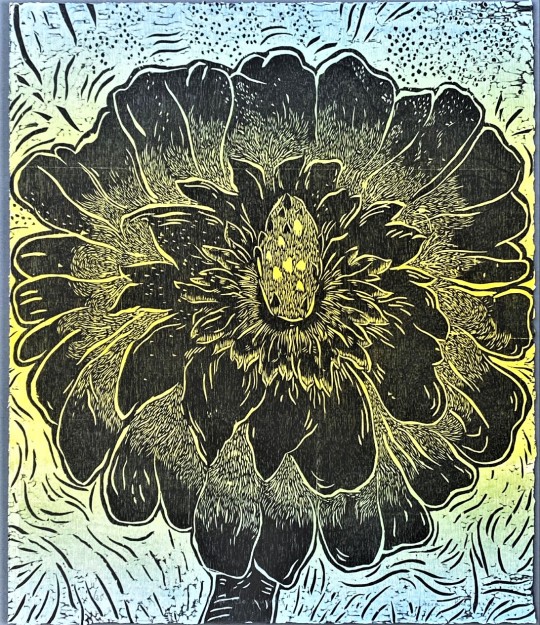
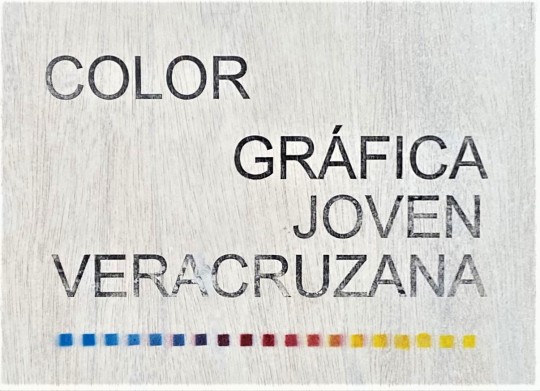
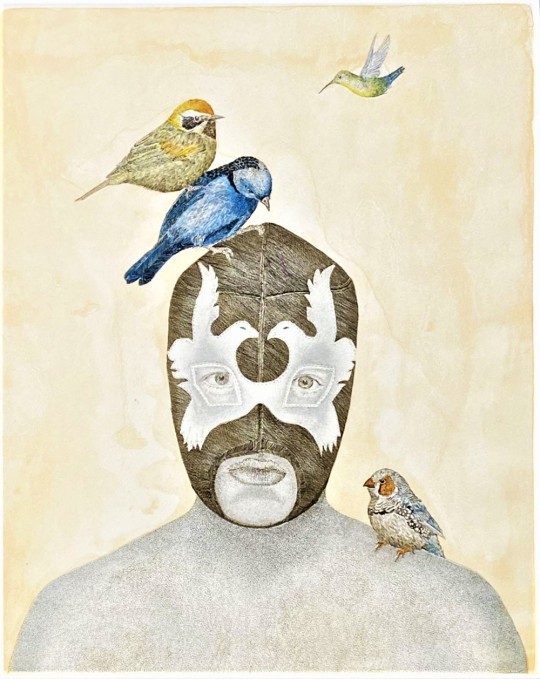
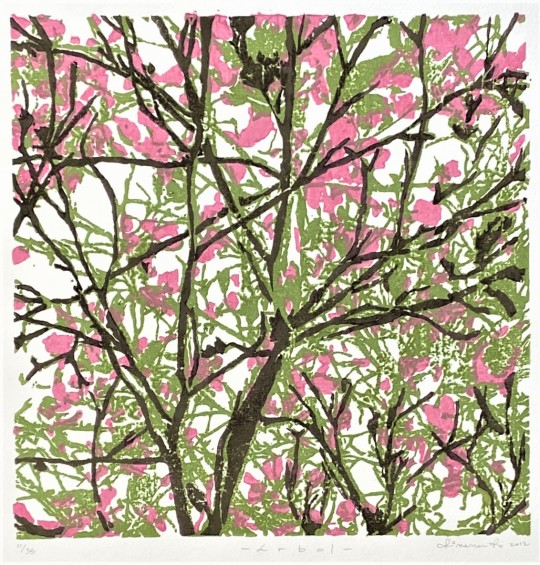
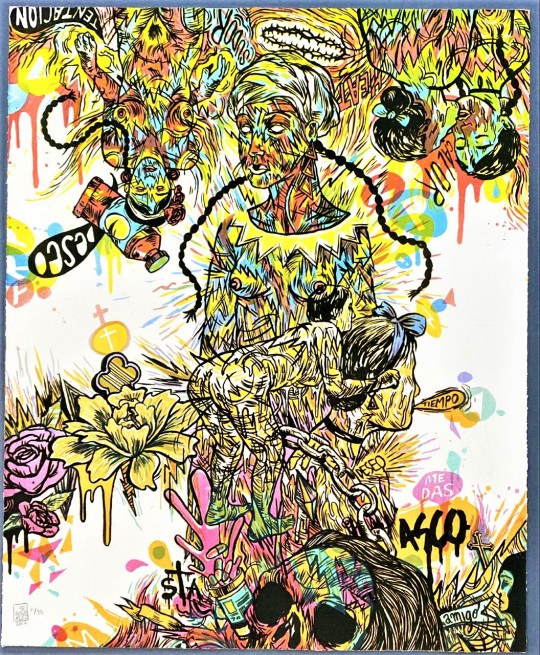

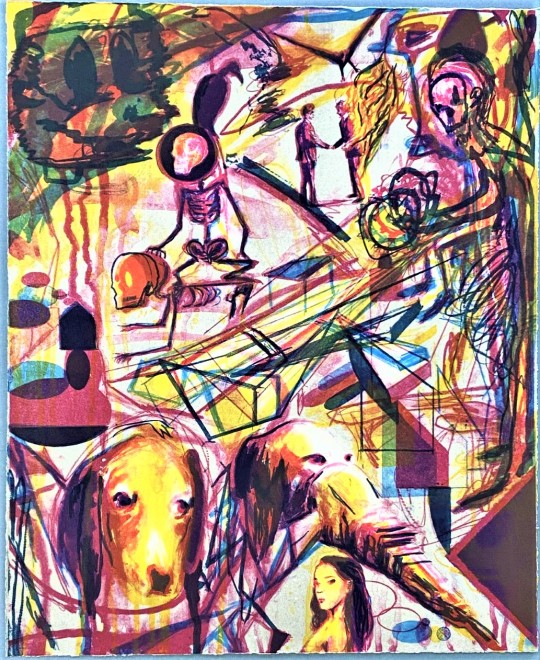

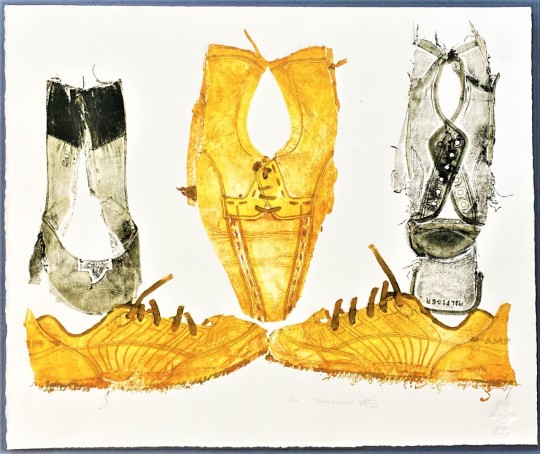
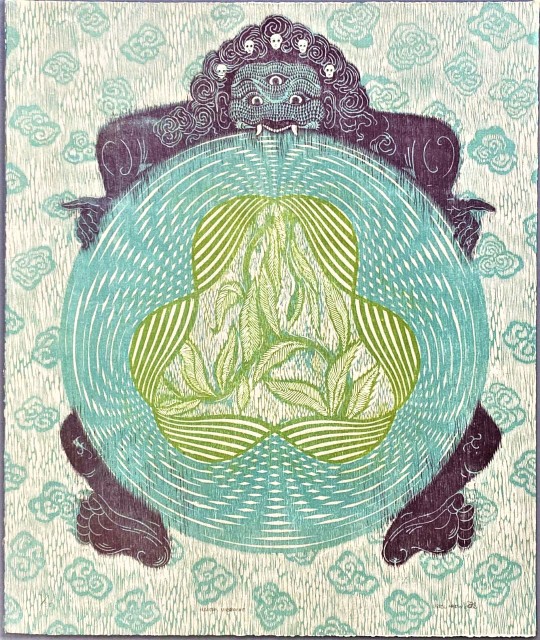
Decorative Sunday: La Ceiba Gráfica
In 2013, Per Andersen and Martin Vinaver of the Veracruz, Mexico printmaking workshop La Ceiba Gráfica attended the annual conference of Southern Graphics Council International held in Milwaukee that year. Working with UWM Senior Lecturer in Art & Design Raoul Deal, they mounted an exhibition of large color prints by young artists from the workshop at the Walker’s Point Art Center.
To commemorate their time in Milwaukee, Anderson and Vinaver donated a boxed portfolio of ten prints, Color Grafica Joven Veracruzana, to our Special Collections. Produced in an edition of 35 copies, the ten 60 x 49 cm prints shown here demonstrate a range of printmaking techniques, including lithography, engraving, woodcut, collagraph, and Japanese mokuhanga wood block printing.
Located in Coatepec, Veracruz, the mission of La Ceiba Gráfica is to use art, education, environmentalism, and collective artistic work to create a model of social transformation that generates empowered communities that are aware of their responsibility in caring for their natural environment. The artists represented here are Edgar Cano, Sr. González, , Daniel Berman, Uriel Marín, Sebastían Fund, Rodolfo Sousa, Lucia Prudencio, Abel Zavala, Nicolás Guzmán, and Jimena Ramos.
View more Decorative Sunday posts.
#Decorative Sunday#decorative arts#printmaking#La Ceiba Gráfica#Per Andersen#Martin Vinaver#Mexican artists#Mexican art#Veracruz#Color Grafica Joven Veracruzana#lithographs#woodcuts#collagraph#mokuhanga#printmaking workshop
76 notes
·
View notes
Text
I've posted pictures of the woodcut prints I made during training, but now I've made proper scans. So here they all are in one post!

^ This is my first practice print, to test the techniques we'd been taught in the first week. It's melon bread and slices of peach hahah. Because I was already pretty ok at the carving part, I wanted to do simple shapes, so I could focus on printing. It took me about three days to make.
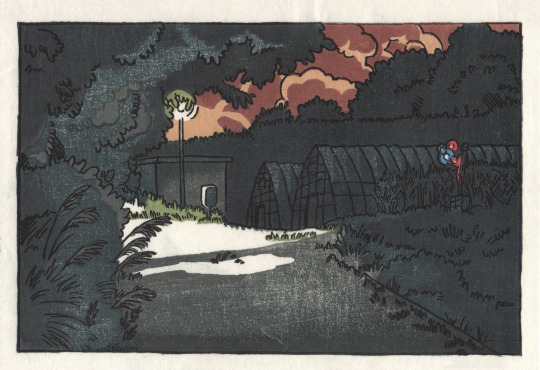
^This is the second print, and it took me eight days to carve they key block (the line art) alone, and about two (and a half?) weeks in total. Unlike the first print I wanted to make something quite complicated. Before I started I hadn't considered that the mixing of colours would be the most difficult thing about this.. I would like to try printing it at home a few more times and see if I can print the colours more like I imagined them.

^The final print is again an entirely different style than the others. I'd learned about shallow carving and wanted to give that a shot. In the end it's more like engraving, so this is something I gotta practice hahah. I kinda like the effect still. I used two blocks to print this: the main block has the entire landscape, and the second just the leaves in the foreground, the trees and the shadow on the hills. The main block I inked and printed in three different ways on each print to achieve the shading.
137 notes
·
View notes